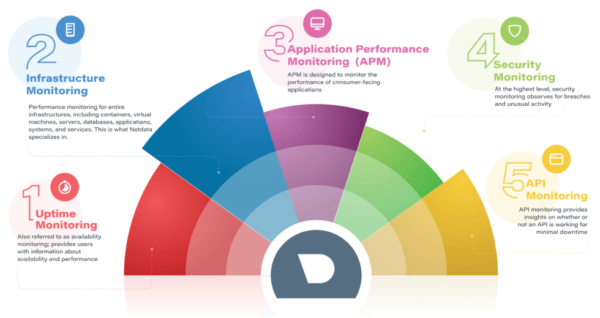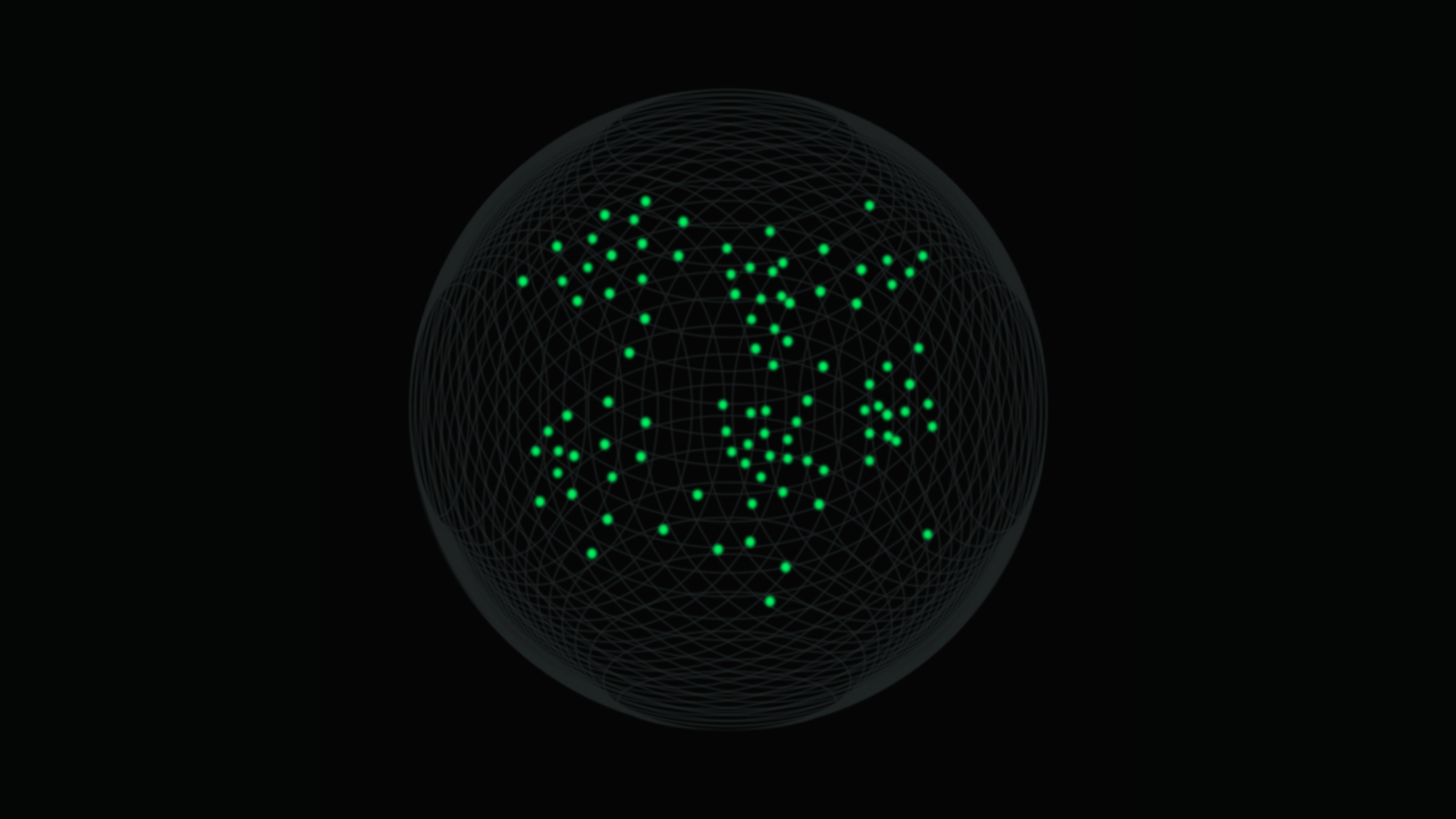What is Infrastructure Monitoring?
Infrastructure monitoring is the practice of continuously tracking the performance, availability, and overall health of IT systems such as servers, databases, networks, cloud services and so many more. To put it simply, it’s about having clear visibility into how all the components of your applications and your entire infrastructure in general, are behaving. This is why we need and use the so-called monitoring / observability tools. Monitoring tools or Observability tools are the ones that collect and analyze various metrics like CPU used, memory, disk activity, network traffic, and many others, thus giving you the information you need to understand your system’s performance and its operation properly. The goal is to identify issues before they even occur or before they cause bigger problems like downtime or performance degradation.
Use-case in practice: A sudden surge in CPU or memory usage is a case in point. It could be indicative of malfunctioning servers or applications. The monitoring tool you have chosen should detect this and alert you / your team. Being notified about the change, having a quick overview of your infrastructure’s metrics allows you to respond swiftly and prevent system failures that negatively affect users.
What Infrastructure Monitoring Covers:
- Servers: Track CPU, memory, disk usage, and general system health.
- Networks: Monitor bandwidth, latency, packet loss, and network traffic flow.
- Databases: Analyze query times, connection numbers, and overall performance.
- Cloud Services: Keep track of resource usage, health status, and billing metrics.
- Other Applications: Monitor response times, error rates, and service availability.
Why is it Important to Monitor your Infrastructure
Infrastructure monitoring is something that must be taken into account by all the organizations that depend on IT systems. A monitoring solution, in this connection, is not only a tool that allows to overcome problems but rather a preventive measure. It includes a reliability, security, and scalability check that makes the infrastructure functioning smooth. Here’s why monitoring should be a priority:
- Prevent Downtime: Nothing is more disruptive than unexpected downtime. If there are any IT systems that go down, it means that the company becomes inefficient, it loses money and its reputation declines. To eliminate these kinds of interruptions, infrastructure monitoring is your first and best guess, since it marches you about the failed things. Once they are only starting to show signs, you will be alerted and easily find the issue. For example, the server which is almost at full capacity, a network switch that is giving up or a storage system that is full of data and will soon be rendered useless.
- Optimize Performance: A well-monitored infrastructure allows you to see where performance bottlenecks might be occurring. For example, a database query that’s taking longer than expected or a server that’s constantly overloading. By having this visibility, you can optimize resource usage, reassign workloads, or upgrade hardware to improve the performance of your entire system.
- Scale with Confidence: As your business grows, so does your infrastructure. Monitoring gives you the ability to track when your systems are reaching their limits and need to scale. Whether you’re adding more servers, increasing bandwidth, or upgrading storage, infrastructure monitoring gives you the data you need to scale proactively instead of reactively.
- Control Costs: In environments like the cloud, where resource usage can fluctuate, it’s easy for costs to spiral out of control if you’re not paying attention. Infrastructure monitoring helps you track resource consumption and ensures that you’re not overpaying for services you’re not fully utilizing. Monitoring helps keep your infrastructure lean and cost-effective.
- Ensure Compliance: Many industries require companies to meet strict compliance standards regarding data protection, system availability, and security. Infrastructure monitoring can help maintain compliance by providing logs, reports, and data on system uptime, performance, and security incidents, ensuring that your systems meet regulatory requirements.
What types of IT monitoring exist?
There are many kinds of monitoring available, from application to network to SNMP, which can blur the lines between what monitoring capabilities your company needs and what solution best fits your requirements. Monitoring tools help IT teams get better visibility into events, availability, capacity, and overall health and performance. With more visibility, teams are able to get alerted when an issue occurs, troubleshoot to restore service, analyze anomaly patterns, increase reliability by reducing outages, check resource utilization, and perform root cause analysis with historical data. The graphic below breaks down the main types of monitoring.

Choosing the Right Monitoring Tool
Choosing the right tool for infrastructure monitoring is essential, as different tools offer various levels of detail, real-time capability, and customization options. The right monitoring tool should fit your infrastructure’s specific needs, providing a comprehensive view of your system’s health without adding complexity or performance overhead.
The Value of Real-Time Monitoring
Real-time infrastructure monitoring provides the level of detail and immediacy that’s hard to find in other available enterprise-level tools. It’s not just about collecting metrics—it’s about having instant access to the information you need to make critical decisions about your infrastructure.
What are the challenges with current monitoring?
Often overlooked in monitoring is using real-time and historical data for troubleshooting infrastructure. Using legacy practices that focus on uptime entirely rather than adopting methods that include improving efficiency and performance will continue to widen gaps between IT and business leaders. Neglecting to find ways to optimize systems and increase agility will eventually lead to degradation of the product or service, affecting the business as a whole.
An effective approach for teams will involve troubleshooting via more granular metrics beyond measuring just resource consumption like CPU or memory utilization. All metrics should be available (without resorting to the command line) and can be critical in monitoring and troubleshooting health, performance, anomalies, and outages. A more comprehensive view will help prevent constant fire-fighting by helping IT teams identify underlying issues before they result in downtime. This is the impetus behind Netdata—a troubleshooting tool that zooms into the core of the operation of systems and applications.
What can Netdata Offer you
When it comes to selecting an infrastructure monitoring tool that offers both depth and simplicity, Netdata stands out. Here’s why Netdata could be the ideal choice for your organization:
- Real-Time Monitoring: Netdata is designed to provide real-time visibility into your systems. Unlike tools that might update metrics every minute or every few minutes, Netdata continuously collects and visualizes data in real-time, so you’re never left guessing. You get an immediate view of what’s happening across your infrastructure, which is crucial for identifying and resolving problems quickly. For example, if a server suddenly spikes in CPU usage, you can see the exact second it happened. This granularity allows you to trace issues faster and with greater accuracy.
- Low Overhead: Monitoring should never put a strain on your systems, and that’s where Netdata shines. It’s engineered to be lightweight, collecting thousands of metrics per second adding near - zero load to your infrastructure. Whether you’re monitoring a single server or a fleet of them, Netdata runs smoothly in the background, allowing you to gather critical data without affecting your system’s performance.
- Simple Installation and Intuitive Interface: Unlike some monitoring tools that require complex setup processes and configurations, Netdata is easy to install and get running in minutes. Once installed, you’re presented with an intuitive dashboard that visually represents the health of your systems. The interface is clean, making it simple to understand what’s happening, even if you’re new to monitoring tools.
- Comprehensive Coverage Across Your Stack: Netdata offers broad coverage of your infrastructure, from servers and containers to network devices and applications. This means you can monitor everything from hardware metrics to software performance in one place. No need to juggle multiple tools for different parts of your stack—Netdata gives you full visibility across your entire infrastructure.
- Customizable Alerts: Netdata comes with a flexible alerting system that allows you to set customized thresholds for key metrics, easily, directly from the UI. Whether you want to be notified when disk space runs low, CPU usage exceeds a certain percentage, or network latency spikes, Netdata will alert you before things go wrong. These alerts are actionable, helping you stay ahead of issues before they escalate into larger problems.
